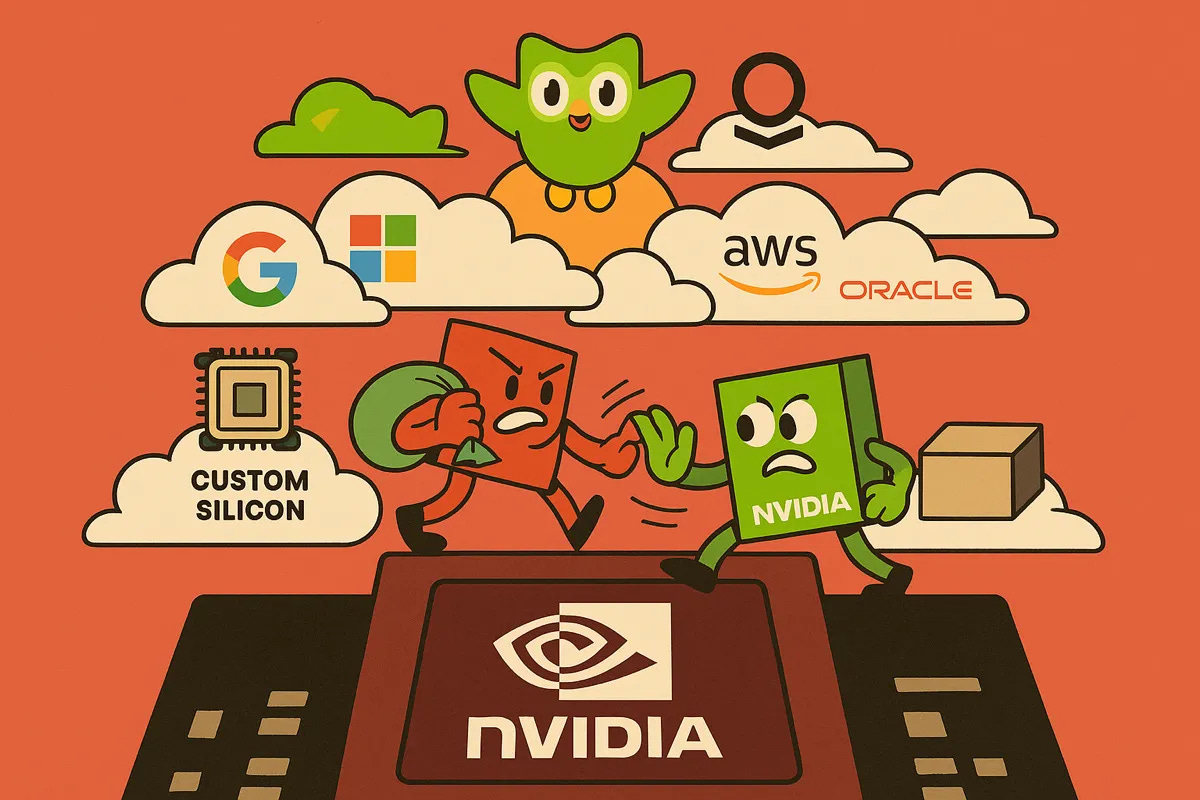The AI Tech Playbook, Part #2
From Apps to Access Points. AI Stack Watchlist inside.
This is Part #2 of The AI Tech Playbook series.
Part 1 can be accessed here.
In Part 1 we discussed the foundations of AI — semiconductors, the cloud and AI models. You see, AI and the business of AI is not one unified, linear thing that you can bet on or bet against.
It’s important to understand the ecosystem and its moving parts holistically and with a big picture perspective. Each layer and sub-layer has different economics, dynamics and competitive environments.
Storytelling Time: When I invested in Apple shares in December of 2013, the market was very pessimistic about the company. The idea was that Apple was a handset company and that it would not continue to make those fat margins as competition ramped up. The market basically believed that 1) Apple was a Nokia and 2) Ignored the iOS ecosystem, ignored Macs, ignored the AppStore, ignored share of mind and the Apple brand, future Apple products etc. That’s why you could buy it at ~10X earnings! After conducting my research on the company and the ecosystem around smartphones and computers then, I proceeded to buy AAPL shares on December 2nd, 2013. And this is why it’s important to understand the big picture and broader competitive landscape of a company you are investing in — if you want to make the big bucks.
As the theme matures, performance delta will widen and become more pronounced — as winners continue to perform and losers converge to a zero value.
An ignored caveat here is that if you buy the winners at the wrong price — you will lose money. It’s not just about picking “the winners”, it’s about picking the winners at the right price. In this two-part series we are also going to touch on pricing and valuations.
After having established the foundations of AI in Part 1 — in Part 2 we are now moving up the stack to discuss the application and interface layers.
It’s worth noting that analysing these “new-economy” business models requires the right tools and frameworks. Conventional valuation methods will not capture them.
At Philoinvestor we’ve consistently discussed this and given examples through our equity pieces. Layering AI tech on top makes things even more complicated.
In my interview with Brandon Beylo of Value Hive I touched on the concept of Old Vs New and gave examples, you can listen to it here. Some examples include those of Duolingo and Netflix (click the links for the pieces on them) — now up multiples since.
Part 2 — From Apps to Access Points
There seems to be a market narrative that the big money is now going to be made here — but as the players get more visible, the moats get shallower.
This part of the playbook explores:
The consumer-facing application layer
Enterprise applications
The quiet power of interfaces
How prompts are becoming product
Strategic tension between Microsoft and OpenAI
A watchlist of AI stocks
Following off from Part 1…
3) The Application Layer
“This is where AI gets applied, monetised and misunderstood.”
The app layer is where the user meets AI — It’s also where investors most often get it wrong. Why?
Because most AI apps are just wrappers. They don’t have much differentiation. They call an OpenAI API, dress it up with a UI, and charge you $20/month. There is not much moat or differentiation — and in a world with infinite VC money and millions of kids vibe coding to launch something, competition is at all-time highs.
In addition, the app layer is the hottest layer in the stack. Fewer people want to design semiconductors and build foundational models than people that want to launch sexy AI apps.
Is there a moat? Is there differentiation?
So, when thinking about AI Applications — ask:
What does this app/company have going for it that competition does not?
What can they do that is difficult for someone to replicate?
Then try to place the app in terms of 2.0 or 3.0.
Is this an existing app/function that has been empowered by AI? Is it simply enhanced by AI? Then it’s a 2.0.
Is this a new app that has been made possible by AI technology? Is it native to AI? Then it’s probably a 3.0.
Differentiation matters, so does distribution — because this layer commoditises fast.
Examples of app layer offerings 🔻
The application layer comprises AI tools and products that people or businesses actually use directly — writing assistants, coding copilots, CRM enhancers, video editors, customer support bots, chatbots, etc.
Some of these apps have been created post-AI, others existed pre-AI and are now being empowered by the technology.
Some apps are built for the consumer (like Duolingo), others are mission critical B2B Vertical Co-Pilots that businesses cannot do without. Let’s have a look at some of these offerings.

